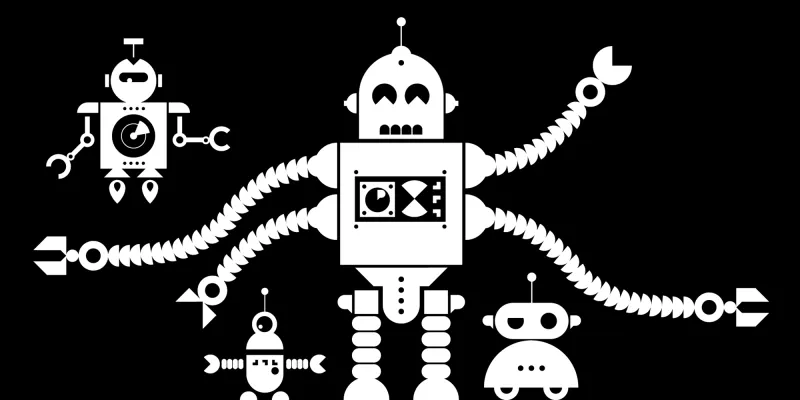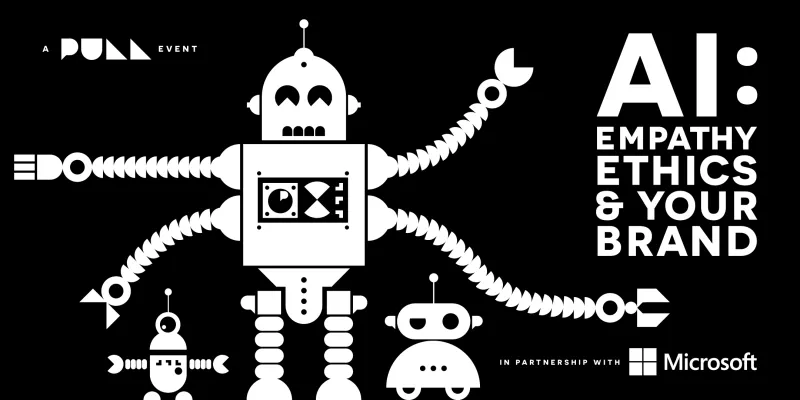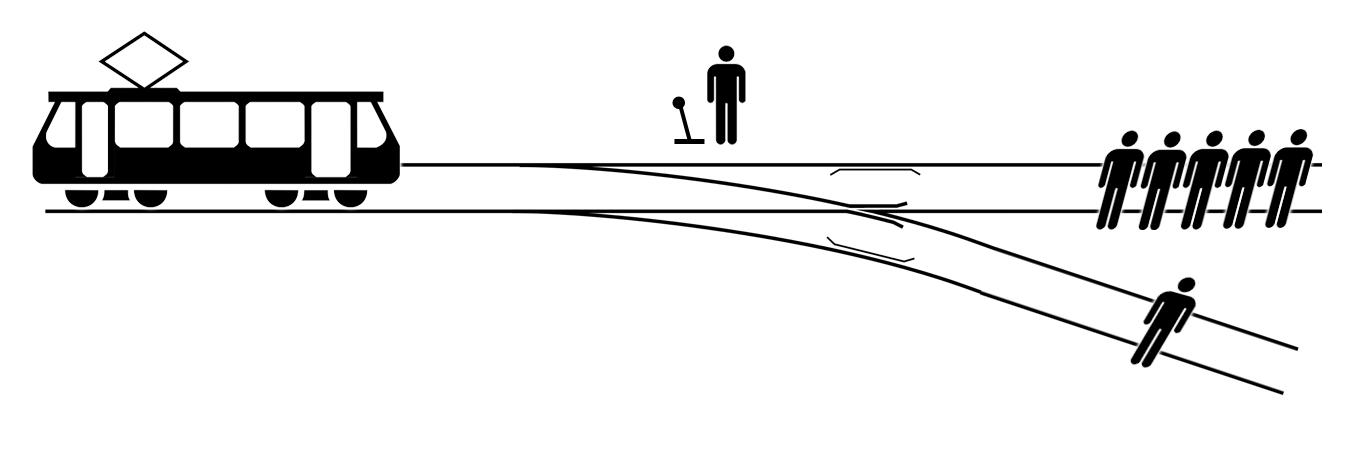


5 things that should inform your AI strategy

Our speakers for the session were:
- Chris Bullick, MD, The Pull Agency and ex-Marketing Director at Motorola
- Phil Harvey, Cloud Solution Architect for Data & AI in One Commercial, Microsoft
- Minter Dial, Tech speaker/author, ex MD of L’Oreal, International Professional Development Division
- Nicole Yershon, Founder NY Collective & LabForHire&Co, and ex-Director, Innovative Solutions, Ogilvy
AI – what will you do with it?
Are you contemplating an AI strategy for your business? If not, you should be whatever your business is. If you are thinking about AI, then here are 5 things you should consider – and only one of them is about what the technology should actually do for you.
Everything’s changed – nothing’s changed.
Think of AI as a steam engine. Isn’t it funny how today’s machine magic always looks more daunting and yesterday’s quaint?
At our event we gathered together some very diverse experts to consider what AI meant to brands and what they should do about it.
So after the event I consider here what are the key things for brand and business leaders to think about when they contemplate what the new industrial revolution brought by AI and machine learning means to them.
Imagine you were an entrepreneur in the middle of the nineteenth century. It didn’t matter whether you ran a mine, milled corn, wove cloth or used horses to haul goods about, the magic of the steam engine was changing – literally – the landscape beyond recognition, unleashing business from the need to be located by running water and offering to do in a day what it had taken a hundred men to do.
The core challenge for these Victorian-age entrepreneurs was no different to the challenge breakthrough technologies offer us today: What can we do today better and faster – and what things can we do that were simply impossible before?
However, I would submit that today’s entrepreneurs and business leaders do have some new questions that their forbears didn’t have – or perhaps didn’t always lose too much sleep about.
They are:- Why does my business do what it does?
- Is that meaningful to my employees?
- Is my business acting with empathy towards its employees and customers?
- Am I choosing to deploy the magic of my machines to benefit humanity or just me?
- Am I acting to ensure that I take full responsibility for the way in which I use the technology and the impact it has so I will never ‘blame the machine’?
These are the themes our speakers picked up. So, let’s look at each of these.
1. Purpose – why does my business do what it does?
Typically one of things Pull does is hold a mirror up to new client’s purpose. We then help define, uncover, clarify or articulate the ‘why’ of client’s brands before we do anything else. It’s amazing how brand positioning and strategy and marketing initiatives seem to flow easily once you have taken care of the big questions.
Based on our work I would never underestimate the effect on staff, stakeholders and customers of a purposeful brand. I would also say that we look for purpose when we look for the best clients to work with. A brand with great purpose is a great brand to work with. A great example of uncovering purpose was our brand transformation award winning work with Andertons Music co. Andertons thought they were musical instrument retailers, but we discovered that everything they did was really driven by the desire to ‘make musicians’. Andertons brands moved their customers more than they realised, and we helped them realise the latent potential in that. Great brands aren’t just bought – they inspire. By building true brand purpose you can build a meaningful strategy for your brand which in turn allows you to understand the need for AI to solve your business challenges.
2. Meaningfulness
As speaker Minter Dial pointed out, recent research shows that younger people would forgo a higher salary to work for a brand with clear purpose and strong ethics. This is clearly linked to 1. Purpose. As Minter points out in his book ‘Futureproof’, meaningfulness can help business leaders explore new technologies without succumbing to shiny object syndrome. Does this tech. support our purpose? Does it make what we do more meaningful to our customers and employees? How does it drive your overall brand strategy rather than false fitting technology into your brand?
3. Empathy
According to Minter, the world of AI is a rational one of binary 0s and 1s inhabited by the logic of developers and techs. This logical world needs added empathy. And empathy is good for business. The top 10 companies in the Global Empathy Index 2015 increased in value by more than 2X that of those in the bottom 10 by 2016 and generated 50% more earnings. At L’Oréal Professional (L’Oreal’s salon business), the best initiatives Minter worked on were ones that emphasised people over product. The focus was on people – beauty advisors, employees – but the impact was emphatically on sales. For Minter, measuring the empathy of a business is an imperative, and empathy has to come from the top. We must also build empathy into our machines:
Use as much context as possible: remember past user’s actions and idleness. When and where they interact. Compose numerous strong responses for each intent and ensure the machine does not repeat itself time after time. Record entities used in the dialogue, match the pronouns to those entities, use relevant synonyms.
And for Pull, empathy is key to our processes. We conduct empathy mapping to design websites. Who are your visitors and what do they want to achieve? How good are you at helping them do what they want to do today? The architecture of sites we design are created to facilitate visitors’ needs not brand owners. Pull are finding we now need to do the same thing for chatbots, and we are learning how to write for chatbots - a whole new art in its infancy.
Is this machine empathy artificial? Can empathy ever be automated? These are interesting philosophical questions. But for now what we need to remember is that like other humans, ‘thinking’ machines evoke emotional responses from humans. A ‘dumb’ machine will feel empathetic to a human if it is designed well. As the designers we must design well.
4. Who benefits? – Ethics
Former code-cruncher Phil Harvey or @codebeard has indeed a very impressive beard and a twinkle in his eye. In some ways an unlikely spokesperson for the company. On the other he is perhaps ideally suited to speak on behalf of a business that appears to have found its ethical bearings and based on all our dealings, is absolutely staying the course. Microsoft’s stated purpose is to “. . .help people and businesses throughout the world realise their full potential” and perhaps a bit more eloquently with AI, to “Amplify human ingenuity”. Microsoft is clearly well-equipped to fulfil both these purposes. What is striking listening to Phil is the degree of selectivity and care with which they are doing it.
Do Microsoft care what AI projects they work on and invest in? They’ve written the book on it – literally ‘Artificial Intelligence and its Role in Society’ – covering: Fairness, reliability, privacy & security, inclusiveness, transparency, accountability and social impact. Whether its their Seeing AI App (a free app that narrates the world around you for the low vision community), helping the Ghanaian government analyse vast amounts of aerial data to identify illegal logging, or monitoring environmental changes related to climate change, Microsoft is picking and choosing where their machines get used.
Even to the point where the company states it has “given up significant sales”. Does this make commercial sense? In the short term perhaps not. In the long term I would say emphatically yes. In a world where cynicism with big tech is possibly at an all time high, this will win them friends in the long run. From Pull’s point of view it is simple. Based on Microsoft’s stated values and what we see of them living them – we really want to work with them – that must apply to others too.
5. Killer robots
Robots will kill. Sometimes because they have been programmed to do so with a huge amount of moral or ethical design built in. The first fatalities have now occurred involving (at least partially) autonomous cars. But I think that the average person would be encouraged by the amount of foresight that is going into what has been personified by the so-called Trolley problem.

In simple terms the dilemma is: In the diagram above a trolley (tram if you are British) is moving towards 5 people immobilised on the track. You have the ability to switch the direction of the trolley so that it kills one other person immobilised on the switched track instead. What choice do you make and why?
Companies like Tesla are dealing with the real-world realities of the decisions that are and will in the future be made by their vehicles. Some of the dilemmas they are considering are much more complex and finely balanced than the one above. In fact you can browse moral dilemmas and make your own judgements here on the ‘Moral Machine’ designed by MIT to explore, evaluate and even invent new moral dilemmas that humans will have to consider when designing decision-making by machine intelligence and built in to AI.
So we would like to think that today’s industrialists are a little more thoughtful about the impact their new machines have on the world and society. Perhaps our connectedness and the level of scrutiny businesses of today receive make it impossible to act otherwise, but we would like to think that the businesses that inspire, those that people want to work for, and work with, are genuinely motivated by more than money. They do give a damn about the planet and those that sail on it, and that they use their power, influence, resources and technology to choose the right projects, partners and actions. And that in the end they will win because people will give a damn back.
And lastly, some advice from a small business which is getting to grips with AI and doing our first AI-related projects. Make a start. Do something – however low key. Start with a chatbot. That’s one of the first things Pull did. As out third speaker Nicole Yershon – a non-tech with an unparalleled record of ‘getting (tech) shit done’ – reminded us. There are three kinds of people: There are people who make things happen, there are people who watch things happen, and there are people who wonder what happened. To be successful, you need to be a person who makes things happen.
Posted 21 September 2018 by Chris Bullick